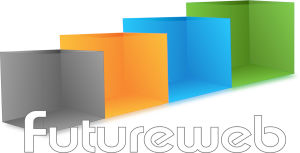First, let me quote Zini:
The first iteration of the navigation system is now in master. Please test!
A few points to consider:
– This is only the first iteration. We will most definitely improve the system further.
– Other navigation modes can be added later. We should even consider allowing editor plugins to add navigation modes.
– Input focus handling is a bit wonky at the moment. When opening the scene sub view and after clicking outside the actual rendered scene you will have to click on the scene again, before it accepts keyboard input. Needs further work, but not my priority now.
– Navigation modes can be selected via the button on the left bar. This buttons pops up another bar with 3 buttons, one for each mode. The icons on these buttons are place-holders (I just used some random icons that are already in use elsewhere).
– There are currently several hard-coded values that influence how the navigation system works (e.g. mouse sensitivity). These will be made configurable, once we have a properly working user settings implementation (*cough*). Likewise all key-bindings (including mouse buttons) will be made configurable eventually.The navigation modes are (from left to right):
1. First Person
– Mouse-Look while holding the left mouse button
– WASD as usual
– Mouse wheel moves the camera forward/backward
– Holding the left mouse button and control, lets you strafe (also vertically)
– Camera is held upright (you can’t do a back-flip or a headstand)2. Free Camera
– Mouse-Look while holding the left mouse button
– WASD lets you strafe (also vertically)
– Holding the left mouse button and control, lets you strafe (also vertically)
– Mouse wheel moves the camera forward/backward
– Q and E keys makes the camera roll3. Orbiting
– You are always facing the center point.
– The center point is 0, 0, 0 by default (we will add other methods to set it eventually)
– Holding the left mouse button makes you rotate around the center point while keeping the distance.
– WASD also makes you rotate around the center point while keeping the distance.
– The mouse wheel moves you towards or away from the center. But you can not pass through the center.
– Q and E keys makes the camera roll
– Holding the left mouse button and control let’s you strafe and moves the center point in the same direction and by the same distance.In all three modes you can hold down the shift key to perform actions at an accelerated speed.
In short, OpenCS editor has been enriched with the ability to change the orientation of the camera in the rendering panel. Of course, the rendering panel is still not able to display the contents of a game cell yet – this feature will come with time.
Meanwhile, Scrawl submitted terrain rendering fixes to the GitHub repository. Could this mean that his latest work in this area revealed some imperfections? This seems suspicious enough that, just in case, I’ll not pry further into this matter.
I similarly prefer to avoid mistreatment of poor Pvdk who, with determination rivaling that of mythical heroes, strives to handle all possible installation media of Morrowind. This group includes CDs from magazines and every known boxed edition – each of which may differ slightly in the packaging of their files.
Cc9cii (contrary to appearances, this is not the Borg designation, only the nickname of one of our developers) submitted a number of patches which will help us reach v0.29.0.
See you next week!
Version 0.29.0 will be released soon — momentary impediments are the bugs that were detected during the RC testing phase. I don’t want to delve into the details, but, if anyone needs to support the thesis that (unit) testing is critical, OpenMW is a perfect example. Fortunately, things are moving in the right direction.
Scrawl’s latest idea is to streamline the process of starting a new game — terrain data can be loaded in another thread, so we don’t have to watch another episode of “The Bold and the Beautiful” while waiting for the start of OpenMW.
Additionally, Pvdk is trying to please grumblers who can’t tolerate Wine on their system. Wine is very helpful with the installation of Morrowind, but I must admit that installing it just for this purpose seems over the top. After all, you can just unpack game archives (there is even a useful library for doing this).
As I’ve mentioned in previous weeks, Pvdk is creating a user-friendly installer for Morrowind. The installer will be enriched by new features as well as other minor improvements: it’ll verify what has already been installed and won’t install the Bloodmoon add-on before Tribunal. It will also properly save the morrowind.ini file.
SirHerrbatka has introduced the ability to automatically create filters using the drag’n’drop feature in OpenCS. The way the expression is created ensures that it can be adapted to the columns which hold corresponding records. For example, when dragging a faction record, let’s say, “the Fighter’s Guild”, into the Referencables’ filter field, it’ll automatically appear in the filter, so that the table will display only NPCs belonging to the Fighter’s Guild.
The new method is much more efficient — the filter creation process speeds up noticeably (even if you type very quickly). The possibilities of this function are a bit more expansive than the example above and eventually it’ll be described in much more detail in the OpenCS manual.
And last but not least here you can read Raevol’s SCaLE 12x Talk Debrief and here you can download slides from SCaLE 12x Talk.
Till next time!
